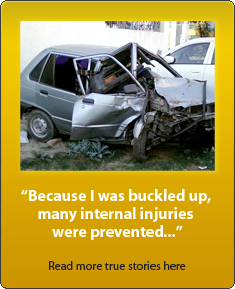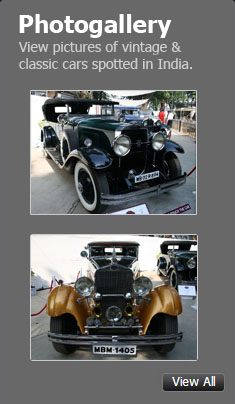News
Why unconditional warranty doesn't apply to your car's OEM fitted tyres
Also makes me wonder what other OEM fitted 3rd party components, like the battery, are treated differently.
BHPian adityaprasoon recently shared this with other enthusiasts.
After long procrastination, I am writing my first post and this is about a bad experience that I recently had with my car tyres.
I purchased my first car last year in October. After long deliberation and considering several cars, wifey finally gave a green for Tata Tigor XZ+. It is a petrol manual. I will post a first-year owner's experience review for this underrated and undersold car in about 6 months.
So coming to the topic of this post, one fine weekend in March, we decided to go to Avani temple and Shree Kotilingeshwara Swamy Temple. They are close by, around 2 hour's drive from Bengaluru. Our first stop was at the Avani Temple. A college friend and his wife also joined us. The drive was mostly uneventful, we spent the two-hour drive chatting about everything on this planet ranging from politics to history to movies and whatnot. We had a stop at the famous Prasad hotel at Mulbagal and then proceeded to Avani Temple. The outside premise of the temple was under maintenance and there were some stone blocks scattered here and there.
I proceeded to park in an empty area which was relatively clear. As luck would have it, the front left tyre brushed the edge of a heavy stone block. The tyre would have missed the edge had I parked even an inch to either side. I heard a loud hissing sound as soon as I stepped out and it took me a while to realise that the sound was coming from my vehicle itself.
By the time I realized what had just happened the tyre was already half-deflated and totally flattened it another 30 seconds.
The first trouble with a brand new car. My mood got ruined as I was sure the damage must be significant. A tubeless tyre would not totally deflate in under a minute on normal puncture.
Anyway, I checked my emotions as there were other people with me and proceeded on a tour of the temple. The inside of the temple was cool and that cleared my mind.
After the visit, I got to work, took out the spare wheel and removed the punctured one. Upon removal, I saw that the inside sidewall had a cut that was all the way through the rubber. No wonder it deflated so quickly. I understood that this won't be easily repairable. Anyway, so we proceed to Shree Kotilingeshwara Swamy Temple on the spare wheel and later returned back to Bengaluru driving below 80Kmph.
The financial planner in me checked for the price of the same tyre during the lunch break and found it to be around 6.5k. I mentally prepared myself for an unplanned expense of that much in case it doesn't get fixed.
Back in Bengaluru the next day I visited a local tyre puncture repair shop and showed the damage. As the sidewall was damaged it wasn't fixable by the regular method. However, he told me that he would get it repaired by some process called patching and explained to me that it would involve heating the area and pasting a rubber patch from inside and outside. He quoted 1500 for it and assured me that it would be safe at triple-digit speeds. I wasn't sure so I called the TASC (Adishakti Motors, Hebbal) to check it by any chance they could help. I visited them the same day and they took the tyre and told me they will try to claim a warranty but the tyre manufacturer will have the final say.
The tyre in question was a Bridgestone B250 175/60 R15 81H tyre with less than 3500kms on it. After returning home I started reading about the patching solution and found some threads on Team-BHP. After reading several posts I decided not to use that fix as it wasn't a safe solution and I cannot risk a tyre burst at highway speeds to save a few thousand bucks.
Two days later the service centre informed me that the warranty claim got rejected as it wasn't a manufacturing defect. Accepting the fate I decided to buy a new tyre and enquired the service centre about the price. To my surprise, they quoted 7200 and another 500 for installation and balancing. I called several other dealers and one dealer (Tyres world, Varthur Road, Bengaluru) quoted me 6500 all-inclusive. I visited them the same day and got a new tyre installed.
Now comes the part that made me write this post. By chance when I visited the tyre dealer, a Bridgestone representative was there and was inspecting other tyres that were there for warranty claim. I was surprised to see another tyre with very similar damage in the sidewall and he cleared the warranty claim for it in front of me. Overjoyed I took out the old tyre from the boot and showed it to him. He inspected it and proceeded to log it into his mobile app for registering the warranty claim as he had done earlier for the other tyre. He then asked me the purchase date of the tyre. And then when I told him that it came with the car, he stopped the entry in his mobile app and told me that OEM fitted tyres cannot be claimed for warranty if it is not a manufacturing defect.
Later I read about the terms and conditions of the warranty on Bridgestone's website, and though this tyre (B250) is included in their unconditional warranty, it doesn't apply to OEM fitted ones. The Bridgestone representative also told me that if the new tyre that I purchased is damaged in exactly the same manner, he would pass it for warranty claim.
This seemed an arbitrary rule to me and hence I decided to write about it here. The experience members can enlighten me about the possible reasons why OEM fitted tyres would be treated differently. Also makes me wonder what other OEM fitted 3rd party components, like the battery, are treated differently.
Here's what GTO had to say on the matter:
Very interesting to know, thanks for sharing your experience.
As the sidewall was damaged it wasn't fixable by the regular method. However, he told me that he would get it repaired by some process called patching and explained to me that it would involve heating the area and pasting a rubber patch from inside and outside.Don't ever do this. Sidewall gone = too dangerous = new tyre is mandatory.
And then when I told him that it came with the car, he stopped the entry in his mobile app and told me that OEM fitted tyres cannot be claimed for warranty if it is not a manufacturing defect.4 probable reasons for this from the tyre manufacturer's point of view:
- They get paid as low as 500 bucks a tyre from the OEMs for supplying tyres on new cars. Compare that to the multiples they collect from aftermarket replacements. Fatter profits will usually mean more leeway with warranty replacements.
- In the aftermarket, the customer is "theirs" (direct relationship). So they would care more to maintain this direct relationship.
- It is the car owner who consciously chose their tyre brand over others at the tyre shop. With a new car, you take the tyre brand it came with.
- Pressure from their dealers. If something goes wrong & we don't get support, we usually blame the tyre dealer for lack of support as much as the tyre brand.
Here's what BHPian raktim had to say on the matter:
More often OEM tyres come with a slightly softer material than the marker purchased version, meeting the car manufacturers’ demand to offer a better riding experience to their customers. This makes these tyres little more susceptible to road hazards. Although not sure, this may be the reason OEM tyres only offer warranty against defects or not reaching the promised km range but not against irreparable punctures.
Here's what BHPian Piyush_DT had to say on the matter:
I had a very good experience with MRF though. I have Vespa SXL 150 which has MRF tyres. After a year, the rear tyre was leaking air from the sidewall and I took it to MRF service station and they changed it immediately as it was in warranty period and was a tyre problem. Surprisingly, the front tyre also had same issue of air leak from the side wall after 4 years of purchase. I went to MRF service station and again tyre was changed as it was in warranty period which is 06 years. I never knew that warranty was 06 years. When I enquired what about the new tyre warranty, the executive said it's 06 year more.
My claim could have been rejected by the same logic but wasn't. I think Bridgestone has that terms and conditions and MRF doesn't (at least from my experience).
Here's what BHPian Abhikumar629 had to say on the matter:
I heard it from my friend working with a leading Tyre OEM that the price at which OEMs buy is close to peanuts. Eg: The tyre for Duster used to cost approx Rs. 500. The open market rate will be nothing less than 7K-8K minimum for the same tyre.
This will give you a clear idea on why the same level playing field was not rolled out to you.
Here's what BHPian Rit1988 had to say on the matter:
I had the exact same experience with Goodyear tyres on my Polo TSI. The tyre suffered a sidewall tear on my way from Alwar to Delhi on a bad patch of road. Visited multiple Goodyear dealers and was given the same explanation that warranty not applicable on OEM fitted tyres. At this juncture, as a last resort, I wrote to Goodyear appealing that it is a new tyre with only about 4000 kms on it and if they could extend any support. To my surprise, they responded confirming this rule but extended a 40% discount on a new tyre after getting it inspected by their representative. So, while didn't get it fully covered but did get some support from the company.
Here's what BHPian ajs85 had to say on the matter:
Few points to consider:
- The automobile manufacturer has a target price to match, the higher the volume of the Automobile manufacturer higher the negotiating power (thus with a small fraction of price one company is easily replaceable by other supplier company).
- Special terms and conditions from the supplier to the automobile manufacturer
- There is nothing called free lunch, thus sometimes the auto manufacturer reduces the cost of the tyre by agreeing to lesser favourable warranty terms to the end customer.
- Volumes also determine the time between the manufacturing of the tyre and fitment to vehicle to the vehicle getting sold to the end customer. The terms may or may not factor in the time gap, thus longer or shorter warranty periods (Eg. Less time gap for fast-moving models, more time gap for slow-moving models).
- Demand for a particular size of the tyre also determines the availability of the brand.
Thus yes the tyres are manufactured with the same model number with different standards and terms and conditions. The combination of the above factors also determines the terms and conditions agreed and the price at which the tyre is supplied to the auto manufacturer.
Check out BHPian comments for more insights and information.







.jpg)










